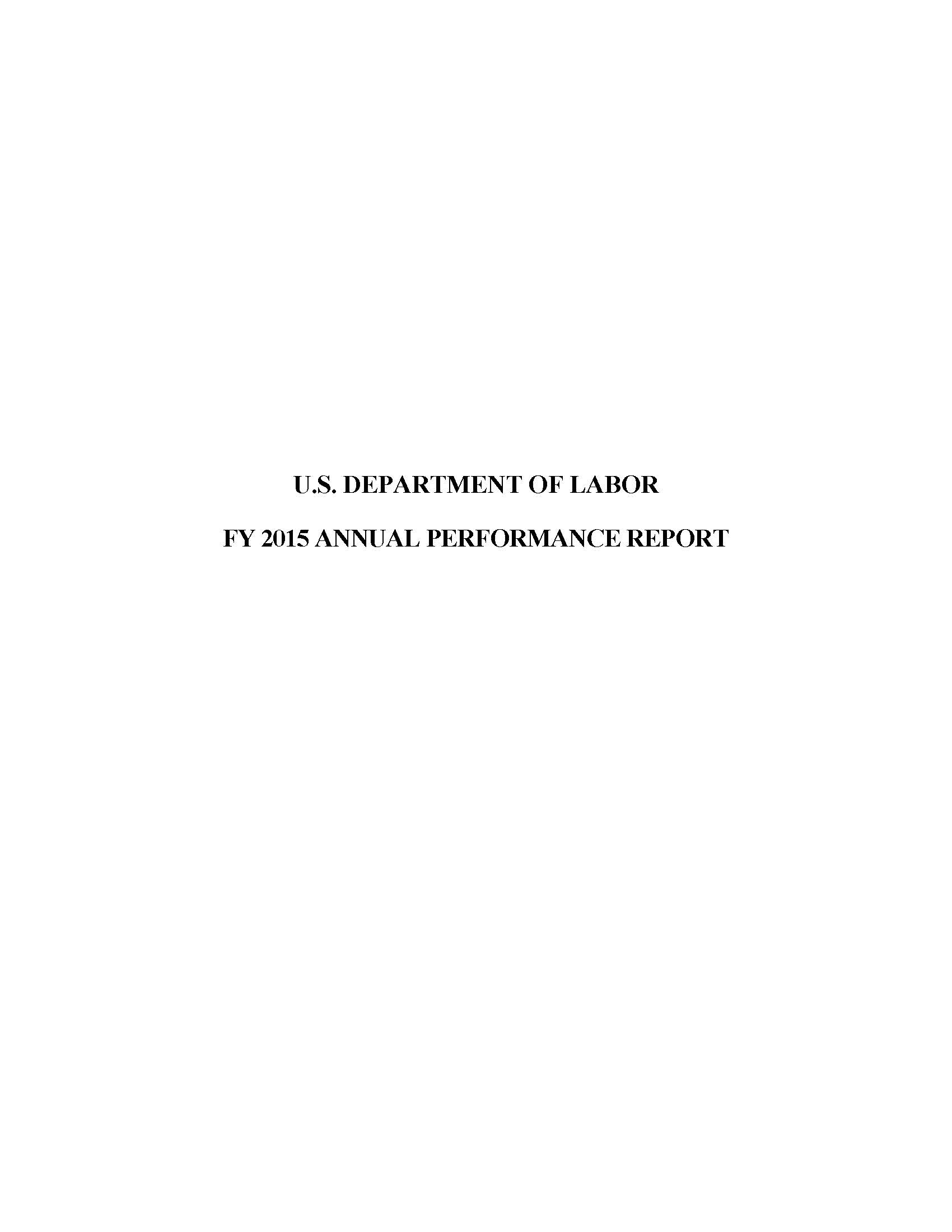- Home
- Agencies
- Department of Agriculture
- Department of Housing and Urban Development
- General Services Administration
- Department of Commerce
- Department of the Interior
- National Aeronautics and Space Administration
- Department of Defense
- Department of Justice
- National Science Foundation
- Department of Education
- Department of Labor
- Office of Personnel Management
- Department of Energy
- Department of State
- Small Business Administration
- Environmental Protection Agency
- Department of Transportation
- Social Security Administration
- Department of Health and Human Services
- Department of the Treasury
- U.S. Agency for International Development
- Department of Homeland Security
- Department of Veterans Affairs
- Goals
- Initiatives
- Programs
Primary tabs
FY 14-15: Agency Priority Goal
Increase the percent of participants who receive intensive services provided by Disabled Veterans Outreach Program specialists, with a focus on improving employment outcomes for veterans.
Priority Goal
Goal Overview
As large numbers of service members and veterans return to the civilian labor force, they are met by an improving but still-challenging labor market. Veterans, service members, and their families still face significant barriers to entering and maintaining meaningful employment. This is especially true for veterans with significant barriers to employment, including those with a service-connected disability, the educationally or economically disadvantaged, and veterans ages 18-24, who experience historically high unemployment.
Additionally, the last several decades have seen significant shifts in the American economy and workplace. Globalization, outsourcing, the shift from manufacturing to service sector jobs, the rise of technology, the decline in unionization, and the changing ethnic and gender make-up of the population, have changed the physical, social, and cultural landscape of the workforce. Today’s employers increasingly rely on highly-skilled workers with post-secondary degrees, state licensure, or other credentials. Veterans’ transferable skills (gained in past jobs and in the service) can help meet the needs of employers in the 21st century.
Strategies
The Veterans’ Employment and Training Service (VETS) serves America’s veterans and transitioning service members by preparing veterans for meaningful careers, providing employment resources and expertise, maximizing their employment opportunities, and protecting veterans’ employment rights.
All veterans and transitioning service members are eligible for priority of service at American Job Centers (AJCs), including intensive services for Post- 9/11 era veterans. One of the Departmental goals is to increase the rate of veterans and service members receiving intensive services from Disabled Veterans’ Outreach Program (DVOP) specialists. These services include career planning and counseling, skill assessment, referral to training and support services, post-transition follow-up, and providing participants with an individualized plan for mitigating employment barriers. The Department anticipates these services will result in better employment outcomes for veterans with significant barriers to employment, who receive services from DVOP specialists. A 2008 study of the Workforce Investment Act Adult Program found that individuals who receive core and intensive services experience greater benefits – including increased employment rates and earnings – than those who either did not receive WIA services or WIA training.[1]
While VETS will focus on increasing intensive service rates to participants, the Agency will also analyze the entered employment rate of participants after receiving intensive services for several quarters to determine an appropriate baseline. The Department has provided refocusing guidance to State Workforce Agencies that will direct DVOP specialists to serve veterans with significant barriers to employment, while all other veterans will continue to be served by other American Job Center (AJC) programs. This narrowing of eligibility criteria may initially have a negative effect on participants’ entered employment rate as DVOP specialists work with a more challenging population of veterans to mitigate their employment barriers. Thus, this measure will only be reported contextually and targets will not be established.
VETS will achieve an increase in intensive service rates through guidance and technical assistance to states, assessment and evaluation of case management practices, and dissemination of best practices. VETS will closely monitor the services and outcomes of participants to ensure they are receiving the benefits and the services needed to transition to the civilian workforce.
Specifically, VETS is employing the following strategies to increase intensive services to participants served by DVOP specialists:
- Provide technical assistance and guidance to state workforce agencies;
- Conduct federal oversight and monitoring to identify best practices that can be replicated nationwide;
- Conduct additional staff training and development for DVOP specialists;
- Analyze the entered employment rates of participants based on the types of services they receive (i.e., staff-assisted services versus intensive services); and
- Collaborate with the Department’s Employment and Training Administration, which oversees other employment and training services at American Job Centers, to ensure veterans are properly referred to the appropriate service program.
Barriers and Challenges
- There is additional case time required to provide intensive services to participants, potentially resulting in the need for additional DVOP specialists; and
- Cultural change will be required in several states, where DVOP specialists should focus on serving veterans with significant barriers to employments.
[1] Heinrich, Carolyn J., Peter R. Mueser, and Kenneth R. Troske, Workforce Investment Act Non-Experimental Net Impact Evaluation, Impaq International, LLC (2008).
Progress Update
The rate of intensive services for the period ending September 30, 2015, was 75.9%. This meets the quarterly target of 75%. With intensive services continuing to increase, VETS continues to offer technical assistance to grantees, including desktop monitoring of data, site visits, and annual audits. VETS is confident that by September 30, 2016, the percentage of Jobs for Veterans State Grants (JVSG) veterans receiving intensive services will be at or above the 90% target.
Next Steps
No Data Available
Expand All
Performance Indicators
Percent of veterans receiving intensive services served by DVOP specialists
Contributing Programs & Other Factors
DOL's Employment and Training Administration
Strategic Objectives
Strategic Objective:
Statement:
Advance employment opportunities for US workers in 21st century demand sectors and occupations using proven training models and through increased employer engagement and partnerships.
Description:
The Employment and Training Administration (ETA) is responsible for providing opportunity for workers and job seekers to attain the skills and training they need to succeed in a recovering economy. The Employment and Training Administration (ETA) is responsible for providing opportunity for workers and job seekers to attain the skills and training they need to succeed in a recovering economy. DOL’s Veterans’ Employment and Training Service (VETS) provides training and transition programs that increase the opportunity of veterans to transition successfully to a civilian workforce. The agency works collaboratively with ETA to ensure veterans receive enhanced services at one of the 2,600 American Jobs Centers around the country, and undertakes a series of programs specifically designed to meet the needs of veterans transitioning to the civilian workforce. In addition, VETS protects the employment and reemployment rights of service members under the Uniformed Services Employment and Reemployment Rights Act of 1994 (USERRA).
Agency Priority Goals
Statement: By September 30, 2015, increase to 75 percent of participants served by Disabled Veterans' Outreach specialists who receive intensive services.
Description: As large numbers of service members and veterans return to the civilian labor force, they are met by an improving but still-challenging labor market. Veterans, service members, and their families still face significant barriers to entering and maintaining meaningful employment. This is especially true for veterans with significant barriers to employment, including those with a service-connected disability, the educationally or economically disadvantaged, and veterans ages 18-24, who experience historically high unemployment. Additionally, the last several decades have seen significant shifts in the American economy and workplace. Globalization, outsourcing, the shift from manufacturing to service sector jobs, the rise of technology, the decline in unionization, and the changing ethnic and gender make-up of the population, have changed the physical, social, and cultural landscape of the workforce. Today’s employers increasingly rely on highly-skilled workers with post-secondary degrees, state licensure, or other credentials. Veterans’ transferable skills (gained in past jobs and in the service) can help meet the needs of employers in the 21st century.











